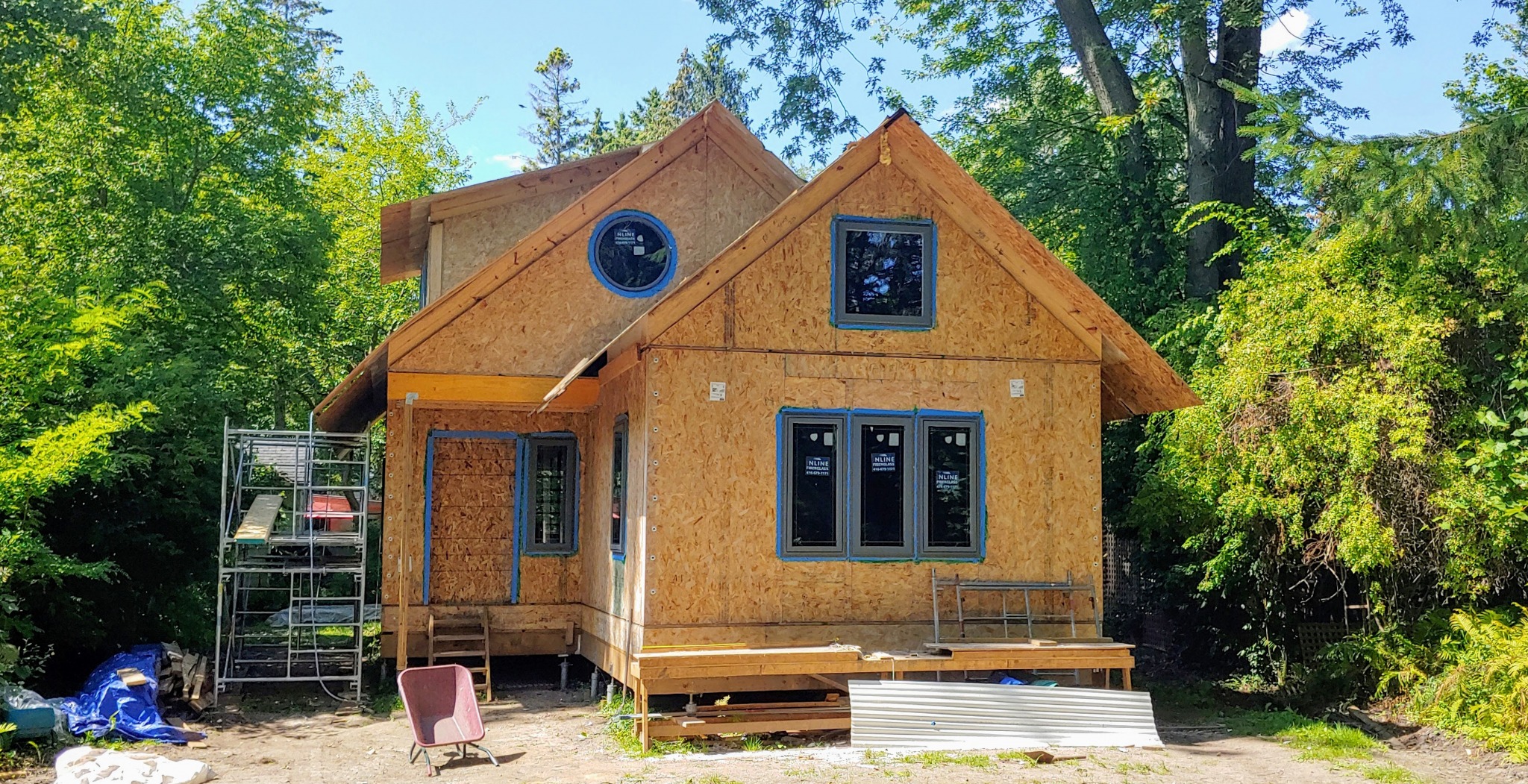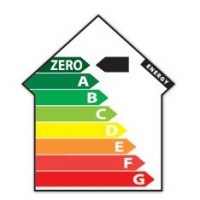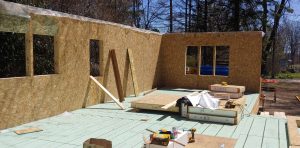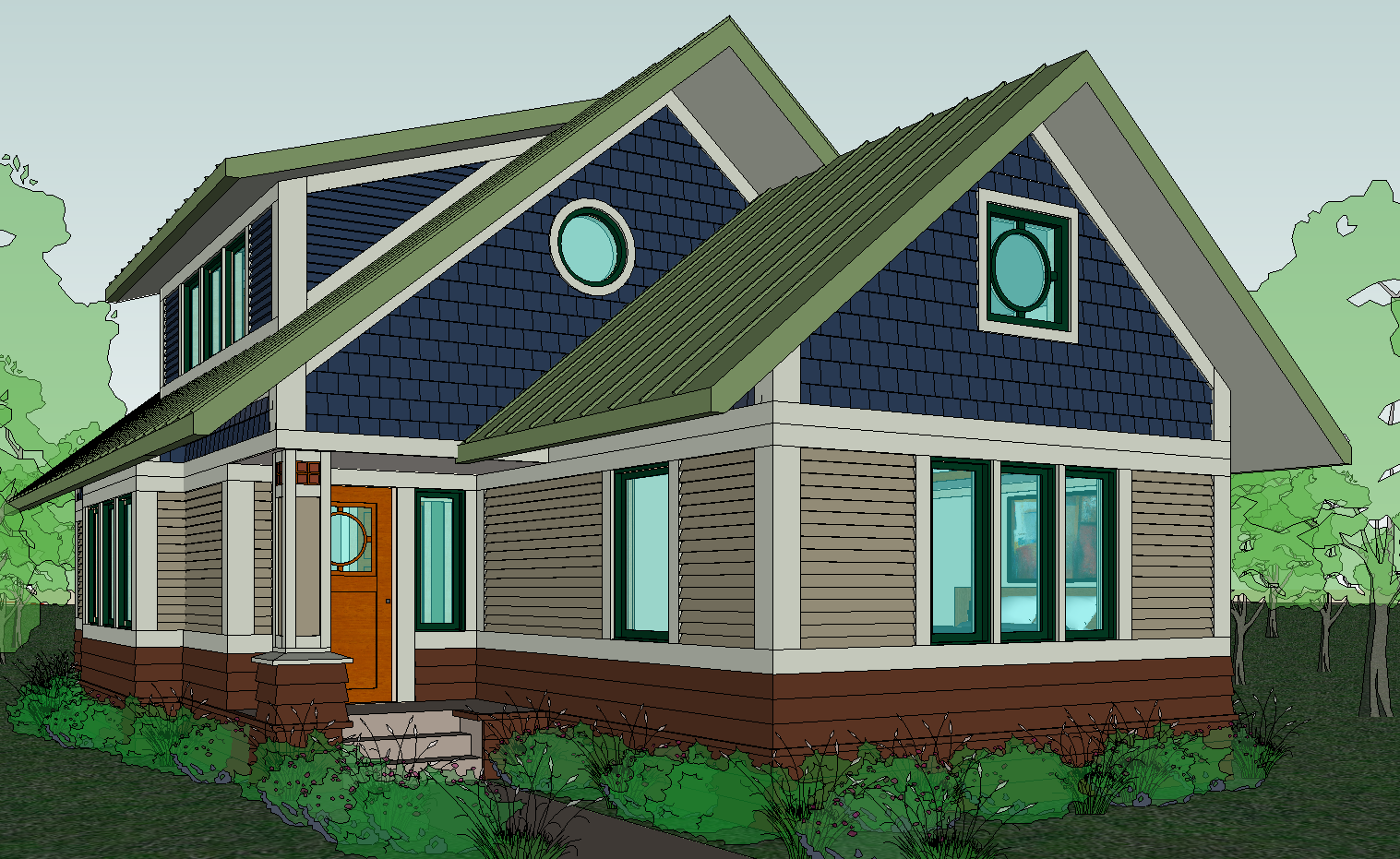The Not So Big Bungalow: A Kit House Made with SIPs (Part 4 of 4 — The SIPs Kit)
This post is Part 4 of a 4-part series on the Not So Big Bungalow. If you haven’t already read the previous installments, Part 1 — Introduction, Part 2 — Main Level, and Part 3 — Upper Level, I would recommend doing so first, before reading below.

A Not So Big Bungalow with SIPs Kit and windows in place
The Not So Big Bungalow’s foundation, walls, and roof are made using an innovative panelization system called SIPs (Structural Insulated Panels), which makes it super energy efficient, and extra quiet on the inside, and even a Zero Energy Home if desired.
I’ve designed many of my homes to be built with SIPs. They allow construction to happen much faster than is typical, and are a superior construction system to the standard stud frame construction that most houses are built with, both in terms of energy efficiency and structural integrity. If you want to weather a hurricane, for example, this is the system to use. And if you are looking for a way to make the interior of your home super quiet, SIPs will amaze you.
What is a Zero Energy Home?
 Simply put, a Zero Energy Home (ZEH) is a home that produces as much energy as it consumes. Some of the benefits of the ZEH approach are zero energy bills, low carbon emissions, increased home value, and improved health and comfort, not to mention easing the burden on an increasingly overloaded planet.
Simply put, a Zero Energy Home (ZEH) is a home that produces as much energy as it consumes. Some of the benefits of the ZEH approach are zero energy bills, low carbon emissions, increased home value, and improved health and comfort, not to mention easing the burden on an increasingly overloaded planet.
SIPs have a very high insulation value, and when installed properly, provide lower air infiltration rates than any mainstream building system. It is the tightness of these homes that results in very low energy consumption. A key ingredient is controlled ventilation, using an ERV (a type of air-to-air heat exchanger referred to as Energy Recovery Ventilation), which results in high indoor air quality (IAQ). At the core of the Zero Energy approach to home design is the desire to provide a safe, healthy, and extremely quiet interior environment.
These features also positively affect the value of the home, as mortgage lenders will often take the reduced operating costs into account when calculating mortgage applications.
The Not So Big Bungalow SIPs Kit

A Not So Big Bungalow SIPs Kit, mid-assembly
Michael Morley—friend, colleague, fellow author, and an expert in Structural Insulated Panel (SIPs) construction methods—worked with me to create The Not So Big Bungalow SIPs Kit, which contains all the components to construct the thermal/structural shell of this home, except for doors and windows. (For a complete list of materials, see the Not So Big Bungalow SIPs Kit Materials and Estimate.)
The benefits of this approach to the construction process are significant. The building shell can be completed in just a few days, which keeps the interior protected from the elements, and thus dry and weather-tight throughout the building process. The air and moisture details included in the kit give the house outstanding durability, with low to zero operating costs, and very low maintenance costs.
The Not So Big Bungalow is a model for the way that cutting edge houses are now being built, with high quality materials, a highly insulated thermal envelope, and construction techniques that minimize long term operating costs.
A Blueprint for the Way We Really Live

I hope you’ve enjoyed this tour of the Not So Big Bungalow. Perhaps if enough people start asking for houses with more character, we will see more Not So Big Bungalows being built. I know the demand is there for smaller, better-designed homes. We just have to change our notion of what a house includes. That’s why the subtitle of The Not So Big House is “a blueprint for the way we really live.”
How to Order the Plans and SIPs Kit
The house plans for the Not So Big Bungalow are highly detailed, and delineate all the “Not So Big” features and characteristics that I explain in my books. The SIPs kit provides all the parts required to create the structural and thermal building envelope (all the parts that make the building stand up and keep the inside insulated from the outside), except for the doors and windows.
Although the plans and kit are sold separately, both are needed in order to build the house. Click on the separate links below for more details, and for ordering information.
The Not So Big Bungalow SIPs Kit
Return to Part 1 — Introduction, Part 2 — Main Level, or Part 3 — Upper Level.



